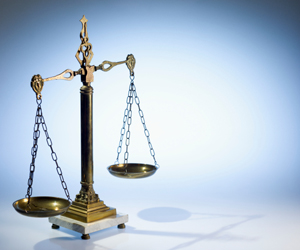 July 2, 2015 – The Wisconsin Supreme Court has ruled that a three-year statute of limitations did not necessarily bar survival and wrongful death claims arising from benzene exposure, concluding such claims can accrue after a decedent’s death.
July 2, 2015 – The Wisconsin Supreme Court has ruled that a three-year statute of limitations did not necessarily bar survival and wrongful death claims arising from benzene exposure, concluding such claims can accrue after a decedent’s death.
Specifically in Christ v. Exxon Mobil Corp., 2015 WI 58 (June 23, 2015), a 5-2 majority ruled that “the applicable statute of limitations began to run when the survival claims and wrongful death claims were discovered, provided that the plaintiffs are able to show that they exercised reasonable diligence in investigating and discovering their claims.”
This case is part of a larger tort suit filed in 2006 by former employees and the estates and beneficiaries of those employees at an Eau Claire tire manufacturing plant.
The tort suit alleged that the former employees’ injuries and deaths resulted from their exposure to benzene in the workplace. This appeal relates to summary judgment entered against eight plaintiffs on grounds their claims were filed too late.
Defendants Exxon Mobil Corp. et al. contended that the plaintiffs’ claims were not filed before the expiration of the three-year statute of limitations set forth in Wis. Stat. section 893.54(2), arguing that the claims could not have accrued later than the deaths of the decedents because the judicially created “discovery rule” in wrongful death and survival actions does not extend to “third parties,” that is, parties other than the decedents.
Plaintiffs countered that their claims did not accrue until they had reason to believe the defendants were responsible for the injuries giving rise to their claims.
The Eau Claire County Circuit Court granted defendant’s motion to dismiss the claims of the eight plaintiffs in 2012 and granted summary judgment, stating that plaintiff’s claims had accrued at death and were therefore barred by the statute of limitations.
 Deborah Spanic, Marquette 2004, is a guest writer for the State Bar of Wisconsin. She can be reached by email.
Deborah Spanic, Marquette 2004, is a guest writer for the State Bar of Wisconsin. She can be reached by email.
The appeals court reversed, stating that “the discovery rule provides that the statute of limitations begins to run when the plaintiff discovers or should have discovered the injury and that the injury may have been caused by the defendant.” The defendants petitioned the Wisconsin Supreme Court for review, and the court affirmed.
Analysis
Justice David Prosser, in drafting the majority opinion, first provided an overview of the types of claims at issue in this case. Damages for injuries sustained by a tort victim prior to his death survive in what is known as a survival action. Survival actions are not new actions created by the death of the victim, they are actions the victim would have had available to him if he had survived, and are brought by the decedent’s personal representative to benefit the decedent’s estate under Wis. Stat. section 895.01.
Wrongful death claims are a the statutory cause of action belonging to named persons for injuries suffered post-death, where plaintiffs are able to seek damages for loss of society and companionship. The wrongful death statute creates a new action, and allows a person to recover his or her own damages sustained because of the wrongful death of another. However, for a wrongful death claim to exist, the decedent must have had a valid claim for damages against the defendant at the time of his death.
In analyzing the discovery rule, the court stated that a cause of action accrues when there is “a claim capable of enforcement, a suable party against whom it may be enforced, and a party who has a present right to enforce it.” The court also noted that tort claims may accrue at three points in time: 1) when negligence occurs; 2) when a resulting injury is sustained; and 3) when the injury is discovered.
The court noted, however, that because tort victims are sometimes unaware of injuries when they happen, strict adherence to this general rule can yield extremely harsh results if a tort victim discovers his or her injury after the statute of limitations has run.
Discovery Rule Applies
The issue raised by this case is not whether the discovery rule applies to both wrongful death claims and survival claims; both parties agree that it does. Rather, the parties disagreed on whether the rule applies to discovery by persons other than decedents.
The court reiterated that a wrongful death action is a cause of action for the benefit of designated classes of relatives, “enabling them by statute to recover their own damages caused by the wrongful death of the decedent.” It is a new action.
However, the plaintiff in a wrongful death action has no claim if the decedent would not have been able to maintain an action in his own right if he had not died.
As a result, the court concluded that the discovery rule continues to apply to wrongful death claims in the only way in which it reasonably can – by permitting those claims to accrue on the date the injury is discovered, or, with reasonable diligence, should be discovered by the wrongful death beneficiary, whichever occurs first.
Contrary to a wrongful death action, the survival action is not a new cause of action, it is the cause of action held by the decedent immediately before or at death, now transferred to his personal representative. At death, the plaintiff “stands in the shoes” of the decedent to pursue any claim the decedent may have had.
The question in this case is whether the survival claims could have accrued after the death of the decedents. Once those claims accrue, it does not matter which party brings the claim, as long as the party has the authority to do so, the court explained.
The court here reasoned that because the personal representative “stands in the decedent’s shoes” for purposes of pursuing survival claims on behalf of the decedent’s estate, the discovery rule makes it possible for those claims to accrue after the decedent’s death.
The court cautioned plaintiffs, however, that the fact the survival and wrongful death claims can accrue after death does not mean those claims can always be pursued after an extended period of time. “The discovery rule notwithstanding, requiring alleged tortfeasors to defend against very old claims may sometimes place too unreasonable a burden on those parties,” Justice Prosser wrote.
The court therefore held that the discovery rule permits the accrual of both survival claims and wrongful death claims to occur after the date of the decedent’s death, affirming the court of appeals and remanding to the circuit court for a determination as to whether the plaintiffs have satisfied the statute of limitations under the accrual rule.
Dissent
Chief Justice Patience Roggensack dissented, noting that the majority opinion errs because “it misperceives the nature of wrongful death claims, and relying on public policy, it conflates discovery of a decedent’s claim for personal injury with the statutory claim of wrongful death that arises upon death.”
She further noted that wrongful death is a statutory claim that arises upon death and does not belong to the deceased but rather to the statutory beneficiaries.
It’s a claim for loss of support and companionship that the deceased person would have provided if he or she had lived, the chief justice explained. As a result, because of the nature of the claim, death is always the “injury” in a wrongful death action, and any claim should accrue at death. Justice Annette Ziegler joined in the dissent.
